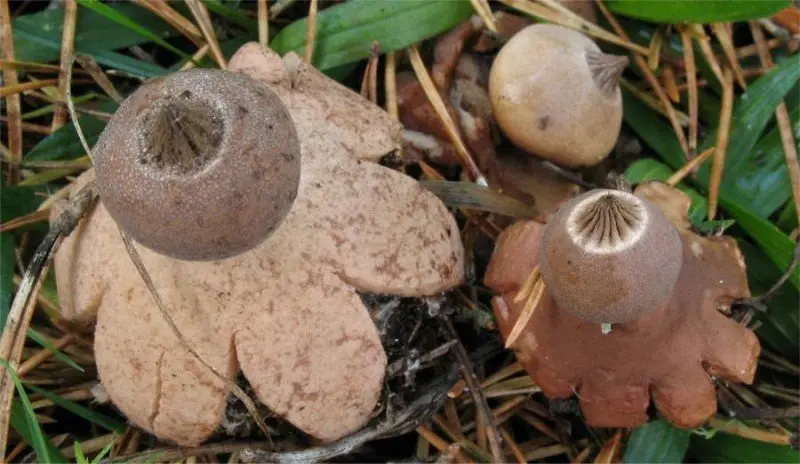Schmidel’s star (Geastrum schmidelii)
- Division: Basidiomycota (Basidiomycetes)
- Subdivision: Agaricomycotina (Agaricomycetes)
- Class: Agaricomycetes (Agaricomycetes)
- Subclass: Phallomycetidae (Velkovye)
- Order: Geastrales (Geastral)
- Family: Geastraceae (Geastraceae or Stars)
- Genus: Geastrum (Geastrum or Zvezdovik)
- Type: Geastrum schmidelii (Schmidel’s starfish)

Schmiedel’s star (lat. Geastrum schmidelii) is a mushroom belonging to the Zvezdovikovy family. It is considered quite rare, but widespread fungus. It has a peculiar star shape, inherent in all mushrooms of this family. In scientific circles, it is called an earth dwarf star.
This species belongs to fungi – saprotrophs, able to successfully grow both on desert soil and on decaying woody forest residues.
The fruiting body of the fungus, small in size, reaches eight centimeters in diameter. It has a hole at its top and a relatively short stem. When unopened, the young mushroom body has a rounded shape. The spore powder that appears during the period of active fruiting is colored brown. Fruit mushroom bodies often successfully overwinter and persist until the next year.
At first glance, this mushroom is striking that Schmiedel’s starfish sits, as it were, on a star-shaped base, surrounded by pointed petals.
The active peak of fruiting occurs at the end of summer and the beginning of autumn.
The favorite habitat of the Schmiedel’s starfish is soft soil and mixed-type forest litter. Light sandy soil is considered especially suitable for growth. The distribution area of the fungus includes the European part of Our Country, Altai, vast Siberian forests.
The mushroom has little nutritional value, but is of particular interest to professional mushroom pickers only because of its rather unusual star shape.
This type of mushroom is considered conditionally edible. But it’s better not to use it. Severe poisoning will not be obtained, but an organism disorder may occur. Starfish Schmiedel does not have a pronounced taste and smell.









